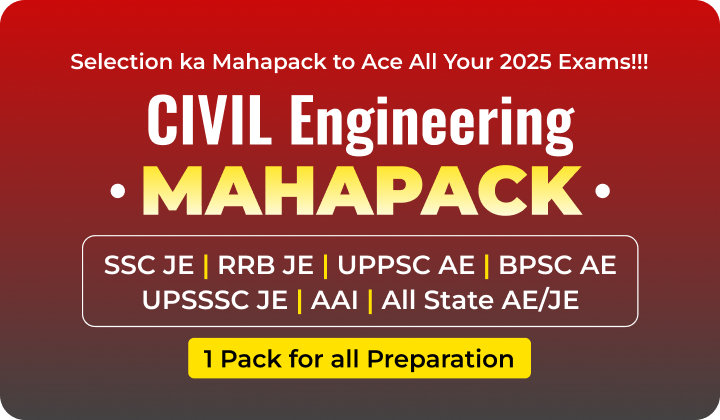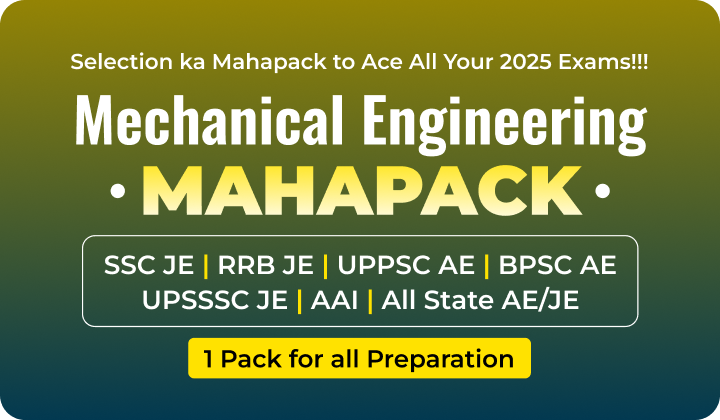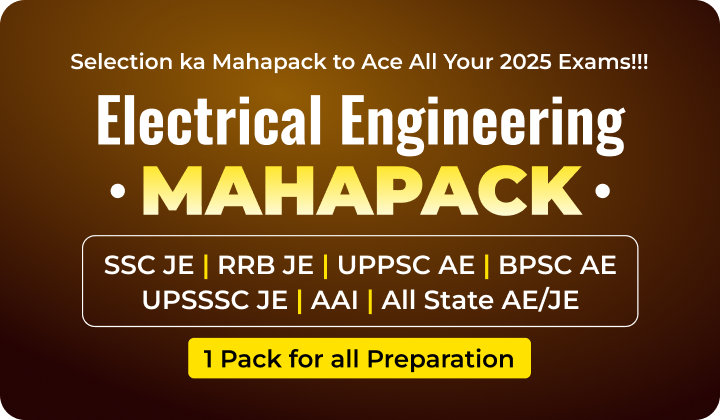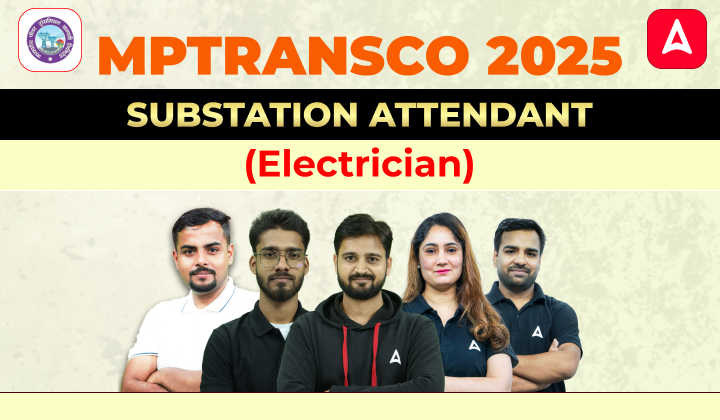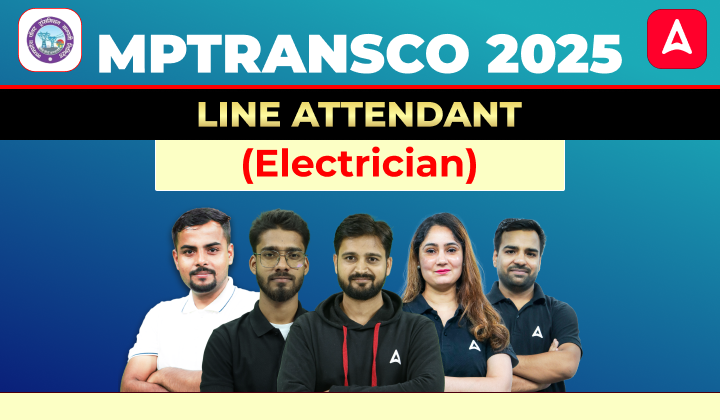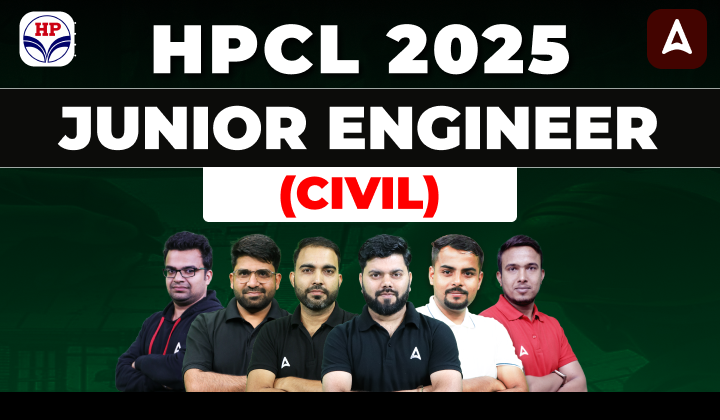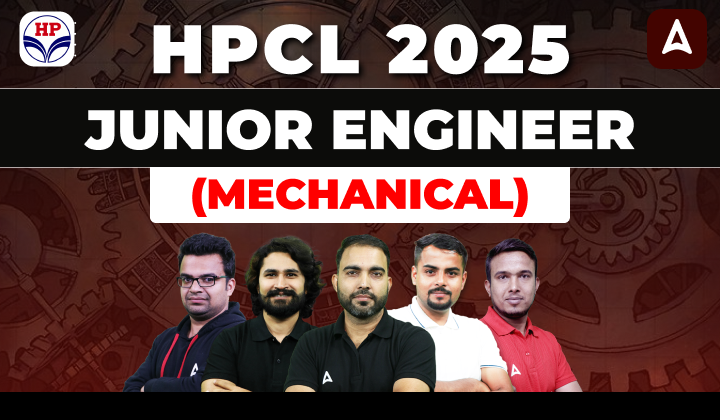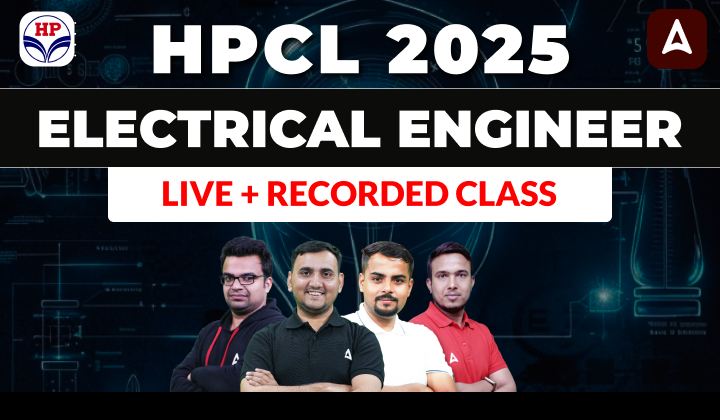Table of Contents
Preparing for the BHEL Artisan Exam 2025? Whether you’re an aspiring Electrician, Fitter, Welder, or Turner, understanding the official syllabus and exam pattern is the first step toward cracking this highly competitive technical exam. BHEL, being a Maharatna PSU, expects candidates to be well-versed in both theory and practical concepts specific to their trade. The exam not only tests your trade knowledge but also your problem-solving ability and basic engineering calculations. With the right syllabus in hand, you can plan smarter and study more effectively. This article gives you the complete insight into the BHEL Artisan Syllabus and Exam Pattern 2025, all in one place.
BHEL Artisan Syllabus & Exam Pattern 2025
The BHEL Artisan Recruitment 2025 is a golden opportunity for candidates aiming for a stable and respected technical role in one of India’s premier public sector companies – Bharat Heavy Electricals Limited (BHEL). To crack the exam, candidates must be well-versed with both the exam pattern and the trade-wise syllabus. Candidates participating in the BHEL Artisan Recruitment 2025 can check the key details from the overview table mentioned below.
| BHEL Artisan Syllabus & Exam Pattern 2025 | |
| Organization | Bharat Heavy Electronics Limited |
| Post Name | Artisans |
| Number of Vacancies | 515 |
| Application Dates | 16th July to 12 August 2025 |
| Exam Pattern | Total Questions: 120, Duration: 90 Minutes |
| Syllabus | Available Below |
| Selection Process | CBE, Skill Test & Document Verification |
| Official Website | www.bhel.com |
BHEL Artisan Exam Pattern 2025
The BHEL Artisan Exam 2025 is designed to evaluate candidates on their technical knowledge, basic engineering concepts, and reasoning ability. Understanding the exam pattern is crucial for efficient preparation. Here’s a detailed breakdown of the exam structure:
| Section | Number of Questions | Marks | Remarks |
| Trade-Related Questions | 70 | 70 | Based on specific trade |
| Engineering Calculations | 30 | 30 | Includes basic calculations |
| Test of Reasoning | 20 | 20 | Logical and analytical reasoning |
| Total | 120 | 120 |
Additional Details
It is also important to check the additional yet key details related to the BHEL Exam Structure 2025.
| Parameter | Details |
| Duration | 90 Minutes |
| Medium of Exam | Hindi, English, and one regional language (based on candidate preference)* |
| Negative Marking | 0.25 marks deducted for each wrong answer |
| Type of Questions | Objective type (MCQs) |
| Prohibited Items | Calculators, smart devices, reference materials |
| Language Priority Note | In case of discrepancy, English version will be treated as final |
BHEL Artisan Syllabus PDF 2025
The BHEL Artisan Syllabus 2025 has been officially released, covering all essential subjects and practical components for each trade under the recruitment. Whether you’re applying for Electrician, Fitter, Welder, Machinist, or any other trade, understanding the detailed syllabus is the first step toward smart preparation. To make your preparation more structured and accessible, we’ve compiled the entire trade-wise syllabus into one handy PDF. You can download the detailed syllabus pdf from the link mentioned below.
BHEL Artisan Syllabus 2025 PDF
BHEL Artisan Syllabus 2025
The BHEL Artisan Exam 2025 consists of two major parts:
- Trade Theory (70 Marks)
- Engineering Drawing & Workshop Calculation (30 Marks)
Below is the detailed syllabus post-wise to help candidates focus on their respective trades.
BHEL Electrician Trade Syllabus 2025
Candidates appearing from the Electrician Trade can check the detailed syllabus from the table mentioned below.
| BHEL Electrician Trade Syllabus 2025 | |
| Topics (Theory – 70 Marks) | Subtopics |
| Basic Electrical Engineering | • Ohm’s Law, Kirchhoff’s Laws • Resistance, Conductance, Power, Energy, Efficiency • Series and Parallel Circuits, AC/DC Circuits • Electrical Units and Measurements |
| Electrical Machines | • Types of Motors: DC Motor, Induction Motor, Universal Motor • Transformers – working principle, types, and applications • Alternators and Generators • Motor Starters and Speed Control Methods |
| Wiring & Installation | • Types of wiring: Cleat, Casing-Capping, Conduit • Wiring Accessories and their symbols (MCB, DB, Fuse, etc.) • Wiring diagrams – single line and schematic • Fault finding in domestic and industrial wiring • Earthing techniques. |
| Tools & Safety | • Hand tools and their uses • PPE (Personal Protective Equipment) • Electrical Safety Practices (shock prevention, fire hazards) • Preventive and breakdown maintenance |
| Electrical Drawings | • Reading and interpreting circuit diagrams and schematics • Panel wiring diagrams • Symbols used in electrical drawings |
| Measuring Instruments | • Multimeter /Digital Multimeter, Megger, Voltmeter, Ammeter, Wattmeter • Energy Meter • Clamp Meter – usage and precautions |
| Earthing & Grounding | • Purpose and methods of earthing • Types of earthing (Pipe, Plate, Rod) • Earth resistance – permissible values and testing |
| Electronics Fundamentals | • Diodes, Rectifiers, LEDs • Transistors (basic function) • Relays and Contactors |
| Batteries & UPS | • Battery types, charging methods, and safety • Inverter and UPS – working and applications |
| Industrial Applications | • Basics of PLC, control panels • Electrical motors used in industry (HT/LT) • Electrical machines manufactured by BHEL |
| Engineering Drawing & Workshop Calculation (30 Marks) | |
| Engineering Drawing | o Reading of Electrical Sign and Symbols. o Reading of Electrical Circuit Diagram & Reading of Electrical Layout drawing o Sketches of Electrical components. o Reading of Electrical wiring diagram and Layout diagram. Reading of Electrical earthing diagram. Drawing the schematic diagram of plate and pipe earthing. o Drawing of Electrical circuit diagram. o Drawing of Block diagram of Instruments & equipment of trades. |
| Workshop Calculation | • Unit, Fractions • Square root, Ratio and Proportions, Percentage • Algebra – Addition, subtraction, multiplication & division, Theory of indices, algebraic formula • Mensuration – Area and perimeter of square, rectangle and parallelogram, Area and perimeter of Triangles • Profit and loss – Simple problems on profit & loss, Simple and compound interest • Estimation and Costing • Material Science – Types metals, types of ferrous and non ferrous metals • Heat & Temperature and Pressure – Concept of heat and temperature, effects of heat, difference between heat and temperature, boiling point & melting point of different metals and non-metals • Elasticity – Elastic, plastic materials, stress, strain and their units and young’s modulus |
BHEL Electronics Mechanic Trade Syllabus 2025
Candidates appearing from the Electronics Mechanic can check the detailed syllabus from the table mentioned below.
| BHEL Electronics Mechanic Trade Syllabus 2025 | |
| Topics (Theory-70Marks) | Subtopics |
| Hand tools and their uses | Identify tools; filing, hacksawing, fitting, drilling, and basic metalwork. |
| Basics of AC and Electrical Cables | Identify, test, measure, and prepare electrical cables; basic electrical concepts and cable specs. |
| Single range meters | Set meters; check continuity; measure voltage and current. |
| Cells & Batteries | Identify terminals, measure voltage, charge/discharge, test readiness, types and specifications. |
| AC & DC measurements | Use multimeter, CRO/DSO, and function generator to measure and observe electrical parameters; learn meter types, controls, and maintenance. |
| Digital Storage Oscilloscope | Identify controls, measure signal parameters, print signals, and build/test function generator; learn features and applications of DSO and CRO. |
| Soldering/De-soldering and Various Switches | Practice soldering/de-soldering, repair PCB tracks, identify and use various switches, and make switch panel boards. |
| Active and Passive Components | Identify and test resistors, inductors, capacitors, relays, and circuit breakers; Ohm’s and Kirchhoff’s laws; RC circuits and resonance circuits. |
| Power Supply Circuits | Test diodes and transformers; build and test rectifiers; measure ripple; voltage regulators; transformer types and diode basics. |
| IC Regulators | Test diodes and transformers, build and test rectifiers and voltage regulators, measure ripple and regulation. Construct IC-based voltage regulators. |
| Transistor | Identify and test transistors, understand construction and terminals, learn biasing, characteristics, and applications as switches and amplifiers. |
| Amplifier | Build and test various transistor amplifiers (fixed, emitter, voltage divider bias, common emitter, collector, configurations, characteristics, gain, etc.) |
| Oscillators | Build and test Colpitts, Hartley, RC phase shift, and crystal oscillators; demonstrate astable, monostable, and bistable multivibrators; positive feedback. |
| Wave shaping circuits | Build and test shunt series, dual clippers, clampers, and Zener diode peak clippers. |
| Power Electronic Components | Identify power components; build and test FET amplifiers, SCR circuits, TRIAC dimmers, and UJT oscillators; terminals and applications. |
| MOSFET & IGBT | Identify and test MOSFETs and IGBTs, characteristics, switching speed, and differences from FETs and transistors. |
| Opto Electronics | Test LEDs, photovoltaic circuits, photodiodes, and phototransistors; understand optical sensors and opto-isolators. |
| Basic Gates | Truth tables of logic gates; build gates using NAND/NOR; test digital ICs; learn digital basics and number systems. |
| Combinational Circuits | Build and test adders, subtractors, decoders, encoders, multiplexers, and demultiplexers. |
| Flip Flops | Identify and test flip-flop ICs (RS, D, T, JK), latches, and understand timing and applications. |
| Op-Amp & Timer 555 Applications | Test analog ICs, Op-Amp circuits (amplifiers, integrators, comparators), construct timer 555 circuits (astable, monostable, VCO, PWM) |
| Electronic Cables & Connectors | Types of cables/connectors, soldering, testing, PC/network cable setups |
| Basic SMD (2, 3, 4 terminal components) | Identify, de-solder, solder SMD parts, check PCB continuity, loose solder, broken tracks, learn advantages and inspection |
| SMD Soldering and De-soldering | Set up soldering station, use crimping tools, solder/de-solder ICs, inspect quality, SMT equipment, pick-and-place machines, reflow ovens |
| PCB Rework | Inspect, test, repair PCBs, detect joint defects, fix damaged tracks, ESD prevention, pad/solder mask issues |
| Protection Devices | Identify and test fuses, holders, MCBs, ELCBs, contactors, relays, understand ratings/voltages, motor control, protection devices |
| Communication Electronics | Practice AM/FM modulation/demodulation, test transmitters/receivers, study antennas and modulation types |
| Microcontroller (8051) | Identify ICs, ports, blink LEDs, use timers, write programs, learn architecture, memory, registers, compare 8051/8052, intro to PIC |
| Sensors, Transducers used in IoT | Use sensors (temperature, proximity, load), detect signals, basics of transducers, program microcontrollers, intro to IoT |
| Analog IC Applications | Build projects using ICs 741, 723, 555, 7106, 7107 (e.g., laptop protector, battery monitor, smoke detector, water level controller) |
| Digital IC Applications | (No specific subtopics listed; related to component use and IC data) |
| Fiber Optic Communication | (No subtopics listed) |
| Digital Panel Meter | Use LED/LCD with driver ICs to show values, measure current, seven-segment displays, multiplexing, DPM ICs |
| SMPS and Inverter | Identify, simulate, troubleshoot, repair SMPS/inverters; build/test DC-DC converters; working principles |
| UPS | Understand and repair UPS, monitor voltages, test, install backup systems, learn types and principles |
| Solar Power (Renewable Energy Systems) | Wire controller, test solar panel, batteries, inverters; learn energy conversion, PV cells, wind, smart systems |
| LED Lights | Design/test LED circuits, series/parallel strings/matrix, LED rating and power |
| LCD and LED TV | Identify/repair LCD/LED TV parts, test panels, motherboards, T-con boards, panels, troubleshoot power supplies |
| Engineering Drawing & Workshop Calculation (30 Marks) | |
| Engineering Drawing | • Engineering Drawing and Drawing Instruments; -Conventions, Sizes and layout of drawing sheets, Title Block, its position and content, Drawing Instrument. • Free hand drawing of; Geometrical figures and blocks with dimension, transferring measurement from the given object to the free hand sketches., Free hand drawing of hand tools and measuring tools. • Lines – Types and applications in drawing • Geometrical figures; Angle, Triangle, Circle, Rectangle, Square, Parallelogram. Lettering & Numbering – Single Stroke, double stroke, inclined. • Electronic Circuit Diagram, Electronic Layout drawing. • Electronics Sign and Symbols, Electronics components, Block diagram of Instruments & equipment of trades. |
| Workshop Calculation | • Unit, Fractions • Square root, Ratio and Proportions, Percentage • Algebra – Addition, subtraction, multiplication & division, Theory of indices, algebraic formula • Estimation and Costing • Material Science – Types metals, types of ferrous and non ferrous metals • Heat & Temperature and Pressure – Concept of heat and temperature, effects of heat, difference between heat and temperature, boiling point & melting point of different metals and non-metals • Trigonometry |
BHEL Fitter Trade Syllabus 2025
Candidates appearing from the BHEL Fitter Trade can check the detailed syllabus from the table mentioned below.
| BHEL Fitter Trade Syllabus 2025 | |
| Topics (Theory-70 Marks) | Subtopics |
| Marking off and layout tools, dividers, scribing block | description, classification, material, care & maintenance. |
| Try square, ordinary depth gauge, protractor | description, uses and cares. |
| Uses, care & maintenance of cold chisels | materials, types, cutting angles. |
| Micrometer- outside and inside | principle, features, parts graduation, reading, use and care, Micrometer depth gauge, parts, graduation, reading, use and care. Digital micrometer. |
| Vernier calipers | principle, construction, graduations, reading, use and care. Vernier bevel protractor, construction, graduations, reading, use and care, dial Vernier Caliper, Digital Vernier caliper, Vernier height gauge: material construction, parts, graduations (English & Metric) uses, care and maintenance. |
| Drilling processes | TPM, visual inspection, preventive |
| Metallurgy | common type (bench type, pillar type, radial type), gang and multiple drilling machine, Determination of tap drill size. |
| Trammel | description, parts, uses. |
| Hand grooves | specifications and uses. |
| H.P. welding equipment | description, principle, method of operating, L.P. welding equipment: description, principle, method of operating. |
| Types of Joints | Butt and fillet as per BIS SP:46-1988 specifications. Gases and gas cylinder description, kinds, main difference and uses |
| Oxygen acetylene cutting | machine description, parts, uses, method of handling cutting torchdescription, parts, function and uses. |
| Drill | material, types, (Taper shank, straight shank) parts and sizes, Drill angle-cutting angle for different materials, cutting speed feed, R.P.M. for different materials, Drill holding devices – material, construction and their uses, Drill troubles: causes and remedy. Drill kinds: Fraction, metric, letters and numbers, grinding of drill. |
| Reamer | material, types (Hand and machine reamer), kinds, parts and their uses, Determining hole size (or reaming), Reaming procedure. |
| Screw threads | terminology, parts, types and their use, Screw pitch gauge: material, parts and uses. |
| Interchange ability | Necessity in Engg, field definition, BIS Definition, types of limit, terminology of limits and fits- basic size, actual size, deviation, high and low limit, zero line, tolerance zone, Different standard systems of fits and limits. British standard system, BIS system. |
| Templates and Gauges | Radius/Fillet Gauge, Feeler Gauge, Hole Gauge – Uses, Care, and Maintenance |
| Metallurgical and Metal Working Processes | Heat Treatment – Introduction and Applications |
| Heat Treatment Methods | Normalizing, Annealing, Hardening, Tempering – Purpose of Each, Tempering Colour Chart |
| Case Hardening and Carburising | Annealing vs Normalizing, Case Hardening – Methods, Carburising – Solid, Liquid, and Gas Processes |
| Gauging Techniques and Standardization | Types of Gauges for Finished Products, Selective Assembly, 8Go9 System, Hole and Plug Basis Standardization |
| Engineering Drawing & Workshop Calculation (30 Marks) | |
| Engineering Drawing | • Engineering Drawing and Drawing Instruments;-Conventions, Sizes and layout of drawing sheets, Title Block, its position and content, Drawing Instrument. • Free hand drawing of; Geometrical figures and blocks with dimension, transferring measurement from the given object to the free hand sketches., Free hand drawing of hand tools and measuring tools. • Lines – Types and applications in drawing • Geometrical figures; Angle, Triangle, Circle, Rectangle, Square, Parallelogram. Lettering & Numbering – Single Stroke, double stroke, inclined. • Reading of dimension and Dimensioning Practice. – Types of arrowhead, Leader line with text, Position of dimensioning (Unidirectional, Aligned) • Concept of axes plane and quadrant, Concept of Orthographic and Isometric projections, Method of first angle and third angle projections • Symbolic representation different symbols used in the related trades. |
| Workshop Calculation | • Unit, Fractions • Square root, Ratio and Proportions, Percentage • Algebra – Addition, subtraction, multiplication & division, Theory of indices, algebraic formula • Mensuration – Area and perimeter of square, rectangle and parallelogram, Area and perimeter of Triangles, Area and perimeter of circle, semi-circle, circular ring, sector of circle, hexagon and ellipse, Surface area and volume of solids – cube, cuboid, cylinder, sphere and hollow cylinder, Finding the lateral surface area, total surface area and capacity in litres of hexagonal, conical and cylindrical shaped vessels • Levers and Simple machines, Simple machines – Effort and load, mechanical advantage, velocity ratio, efficiency of machine, relationship between efficiency, velocity ratio and mechanical advantage • Trigonometry – Measurement of angles, Trigonometrical ratios, Trigonometrical tables • Centre of gravity – Centre of gravity and its practical application • Area of cut out regular surfaces and area of irregular surfaces, Area of cut out regular surfaces – circle, segment and sector of circle, Related problems of area of cut out regular surfaces – circle, segment and sector of circle, Area of irregular surfaces and application related to shop problems • Elasticity – Elastic, plastic materials, stress, strain and their units and young9s modulus, Elasticity – Ultimate stress and working stress • Heat treatment and advantages, Heat treatment – Different heat treatment process – Hardening, tempering, annealing, normalising and case hardening |
BHEL Foundryman Trade Syllabus 2025
Candidates appearing from the BHEL Foundryman Trade can check the detailed syllabus from the table mentioned below.
| BHEL Foundryman Trade Syllabus 2025 | |
| Topics (Theory-70marks) | Subtopics |
| Introduction to Foundry | Principles, Types of Foundry, Advantages of Metal Castings, Quality Assurance, Importance of Quality in Foundry |
| Gating System | Elements, Types, Functions of Gating System, Risers & Types, Feeders, Fluxes, Chills & Types, Directional Solidification, Exothermic Materials |
| Sand Testing and Casting Process | Sand Types & Characteristics, Moisture Content Test, Permeability Test, Casting Processes (Pressure Die Casting, Resin Bonded Mould, etc.), CO₂ Moulding, Mould Coating Types, Core Removal, Casting Inspection |
| Mould and Moulding Process | Types of Moulds (Green Sand, Dry Sand), Mould Parts (Pouring Basin, Ingate, Cope), Hand Moulding (Bench, Floor), Machine Moulding (Hand/Power Operated) |
| Moulding Sand | Properties (Permeability, Collapsibility), Ingredients (Sand Types, Shapes), Sand Classification (Green, Core), Characteristics (AFS Fineness, Strength), Sand Preparation (Grinding, Sieving) |
| Foundry Tools | Types of Tools – Marking, Measuring, and Others |
| Pattern | Types of Patterns |
| Furnaces | Types of Furnaces for Melting and Refining – Induction Furnace, VAD, etc. |
| Melting Charge Calculation | For Cast Iron and Steel |
| Non-Ferrous Metals | Overview of Non-Ferrous Metals |
| Heat Treatment Furnaces | Fundamentals and Types – Normalizing, Tempering, etc. |
| Iron-Carbon Diagram & Microstructure | Iron-Carbon Equilibrium Diagram for Carbon Steel, Microstructure of Phases |
| Occupational Safety and Health | Causes of Accidents and Fire, PPE for Different Operations |
| Engineering Drawing & Workshop Calculation (30 Marks) | |
| Engineering Drawing |
|
| Workshop Calculation |
|
BHEL Machinist Trade Syllabus 2025
Candidates appearing from the BHEL Machinist Trade can check the detailed syllabus from the table mentioned below.
| BHEL Machinist Trade Syllabus | |
| Drill, Tap, Die & Threading Tools | Types & Applications, Tap Drill Size, Screw Thread Terminology, Reamers – Types, Materials, Hole Size, Procedure |
| Vernier & Micrometers | Vernier Height Gauge – Construction, Setting, Reading, Care; Vernier Caliper, Outside Micrometer, Vernier Micrometer – Uses, Reading, Maintenance |
| Drilling Machines | Types & Applications, Pillar & Radial Drills, Countersinking, Counterboring, Spot Facing, Cutting Speed, Feed, Drilling Time Calculations |
| Interchangeability, Limits & Fits | Need, Types, Terminologies, Basic Size, Actual Size, Tolerance Zone, Allowances, British & BIS Systems |
| Slotter Machine | Classification, Principle, Construction, Indexing Process, Driving Mechanism, Quick Return, Job Holding Devices, Safety, Tools, Splines |
| Coolant & Lubricants | Introduction, Types, Properties, Application Methods |
| Milling Machine Basics | Introduction, Types, Parts, Driving & Feed Mechanism, Cutters & Nomenclature, Operations (Plain, Face, Slot, Gang, etc.), Up & Down Milling, Attachments |
| Jigs & Fixtures, Properties of Metals | Types, Principles, Advantages, Machinability based on Physical & Mechanical Properties (Hardness, Ductility, Toughness, etc.) |
| Heat Treatment & Indexing | Need, Types, Methods, Plain Carbon Steel, Indexing – Types, Indexing Head, Plates, Arms, Direct & Simple Indexing |
| Grinding Technology | Grinding Wheels – Types, Bonds, Grade, Marking, Dressing, Glazing, Roughness Symbols, Defects & Remedies |
| Surface Grinding | Types, Parts, Construction, Methods |
| Cylindrical Grinding | Types, Parts, Specs, Wet & Dry Methods, Grinding Wheels, Speeds, Time Calculations, Defects |
| Tool & Cutter Grinder | Construction, Specifications, Tool Rests, Attachments, Cutter Grinding Methods |
| Precision Measuring Tools & Gear Basics | Depth Micrometer, Inside Micrometer, Bore Dial Gauge, Telescopic Gauge, Gauges vs Measuring Instruments, Spur Gear Elements, Gear Tooth Forms |
| Vertical Milling | Parts, Boring Method, Comparison with Horizontal Milling, Reamer Calculations, Twist Drill Nomenclature |
| CNC & VMC Technology Basics | Comparison with Conventional Machines, Accuracy & Repeatability, CNC Elements, Feedback Systems, Operations (Drilling, Tapping, Milling, etc.) |
| CNC Programming | Absolute & Incremental Modes, G & M Codes, Canned Cycles, Subprograms |
| Program Writing & Verification | Part Programs, Process Planning, Tool Holding, Parameter Selection, Program Checking, Tool Offsets |
| CNC Process Planning | Sequencing, Work & Tool Offsets, Holding Methods, Machine Modes (Jog, MDI, MPG), Console Programming, Emergency Stop Functions |
| CNC Collisions | Causes, Costs, Recovery, Setup Issues, Thread Milling Importance |
| Tool Wear & Recovery | Wear Offsets, Power Shutdown Effects, Machine Restart |
| Program Transfer & Productivity | Data Transfer, Downtime Causes & Effects, Machine Hour Rate, Cost Calculation |
| Cutting Tools & Geometry | CRC Concept, Tool Materials, Face Mill, End Mill, Drill, Tap, Insert Holding, Tool Life, Cutting Parameters |
| Gear & Cam Calculations | Helical Cutter, End Mill, Bevel Gear, Cam (Plate & Drum), Worm Gear – Elements, Types, Applications, Calculation Methods |
| Keys, Gear Testing, & Variations | Types of Keys, Causes of Variation, Gear Testing Methods, Gear Errors |
| Engineering Drawing & Workshop Calculation (30 Marks) | |
| Engineering Drawing | Drawing and Drawing Instruments – • Conventions • Sizes and layout of drawing sheets • Title Block, its position and content • Drawing Instrument Lines- Types and applications in drawing Free hand drawing of – Geometrical figures and blocks with dimension • Transferring measurement from the given object to the free hand sketches. • Free hand drawing offhand tools and measuring tools. Drawing of Geometrical figures: • Angle, Triangle, Circle, Rectangle, square, Parallelogram. • Lettering & Numbering- Single Stroke. Dimensioning • Types of arrow head • Leader line with text • Position of dimensioning (Unidirectional, Aligned) Symbolic representation– • Different symbol used in the related trades. Concept and reading of Drawing in • Concept of axes plane and quadrant • Concept of Orthographic and ISO metric projections • Method of first angle and third angle projections (definition and difference) Reading of Job drawing of related trades. |
| Workshop Calculation |
|
BHEL Turner Trade Syllabus 2025
Candidates appearing from the BHEL Turner Trade can check the detailed syllabus from the table mentioned below.
| BHEL Turner Trade Syllabus 2025 | |
| Topics (Theory-70marks) | Subtopics |
| General Workshop Safety | Safety Precautions, Use of PPEs, Housekeeping Practices |
| Basic Machine Shop Tools | Hand Tools, Marking Tools, Fitting Tools, Surface Plates, V-Block, and Other Accessories |
| Measuring Instruments | Vernier Caliper, Micrometer, Height Gauge, Steel Rule, Thread Gauge, Plug Gauges, Slip Gauges, Dial Gauges |
| Lathe Machine Basics | Parts of Lathe Machine, Specifications, Types of Lathe Machines and Their Applications |
| Job Setting on Lathe | Job Mounting Techniques, Attachments & Accessories for Lathe Machines |
| Turning Operations Basics | Cutting Speed, Feed, Depth of Cut – Setting Parameters as per Material and Operation |
| Types of Lathe Operations | Centering, Facing, Turning, Taper Cutting, Threading (Screw, Square, Acme, Buttress), Knurling, Trepanning, Grooving, Parting, Beveling, Drilling, Boring |
| Coolants & Lubricants | Application Methods and Benefits |
| Engineering Drawing & Workshop Calculation (30 Marks) | |
| Engineering Drawing |
|
| Workshop Calculation |
|
BHEL Welder Trade Syllabus 2025
Candidates appearing from the BHEL Welder Trade can check the detailed syllabus from the table mentioned below.
| BHEL Welder Trade Syllabus 2025 | |
| Topics (Therory-70marks) | Subtopics |
| Importance of Trade Training | Industry Safety, Elementary First Aid, Precautions in SMAW & Oxy-Acetylene Cutting |
| Welding Equipment & Terminology | Arc & Gas Tools, Accessories, Processes, Terms & Definitions |
| Types of Welding Joints | Types of Joints and Applications |
| Preparation & Fit-up | Fit-up for Various Thicknesses, Surface Cleaning |
| Basic Electricity & Arc Principles | Electrical Terms, Heat & Temperature, Arc Characteristics |
| Gases & Flames | Common Gases, Flame Temperatures, Oxy-Acetylene Flames, Gas Cutting Equipment |
| Arc Welding Power Sources | Transformer, Rectifier, Inverter – Uses, Maintenance, AC vs DC Advantages |
| Welding Positions & Symbols | Flat, Horizontal, Vertical, Overhead Positions, Slope & Rotation, BIS & AWS Symbols |
| Arc Length & Polarity | Types, Effects, Polarity Types & Applications, Weld Quality, Defects, Weld Gauges |
| Acetylene & Oxygen Handling | Calcium Carbide Hazards, Flashback Arrestors, Gas Properties, Charging Process, Cylinder Color Codes, Regulators (Single/Double Stage) |
| Oxy-Acetylene Systems | Low/High Pressure Systems, Blow Pipes, Rightward/Leftward Techniques |
| Welding Defects & Distortion | Arc Blow, Distortion Control Methods, Arc/Gas Defects – Causes & Remedies |
| Pipe Welding | Pipe Specifications, Joints, All Positions, Pipe vs Plate Welding |
| Pipe Joint Development | Elbow, T, Y, Branch Joint, Manifold System |
| Gas Brazing & Soldering | Filler Rods, Fluxes – Types & Functions, Principles, Types, Defects |
| Electrodes | Types, Flux Functions, Coating Factor, Storage, Moisture Effects, Baking |
| Weldability & Heating | Preheating, Post Heating, Interpass Temperature |
| Brazing of Copper/Brass | Methods, Properties, Brazing Cutting Tools |
| Engineering Drawing & Workshop Calculation (30 Marks) | |
| Engineering Drawing |
Title Block, its position and content, Drawing Instrument. |
| Workshop Calculation | • Unit, Fractions • Square root, Ratio and Proportions, Percentage • Algebra – Addition, subtraction, multiplication & division, Theory of indices, algebraic formula • Mensuration – Area and perimeter of square, rectangle and parallelogram, Area and perimeter of Triangles • Profit and loss – Simple problems on profit & loss, Simple and compound interest • Estimation and Costing • Material Science – Types metals, types of ferrous and non ferrous metals • Heat & Temperature and Pressure – Concept of heat and temperature, effects of heat, difference between heat and temperature, boiling point & melting point of different metals and non-metals • Trigonometry |


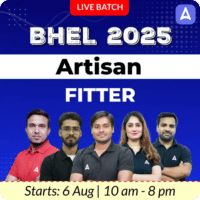
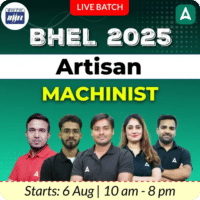
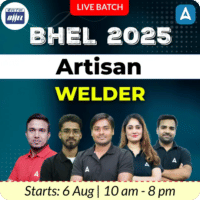

 RRB JE Syllabus 2025 For CBT 1, 2 and Te...
RRB JE Syllabus 2025 For CBT 1, 2 and Te...
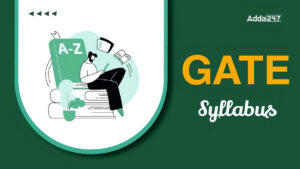 GATE Exam Syllabus 2026 & Detailed P...
GATE Exam Syllabus 2026 & Detailed P...
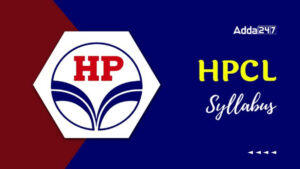 HPCL Syllabus & Exam Pattern 2025, D...
HPCL Syllabus & Exam Pattern 2025, D...

